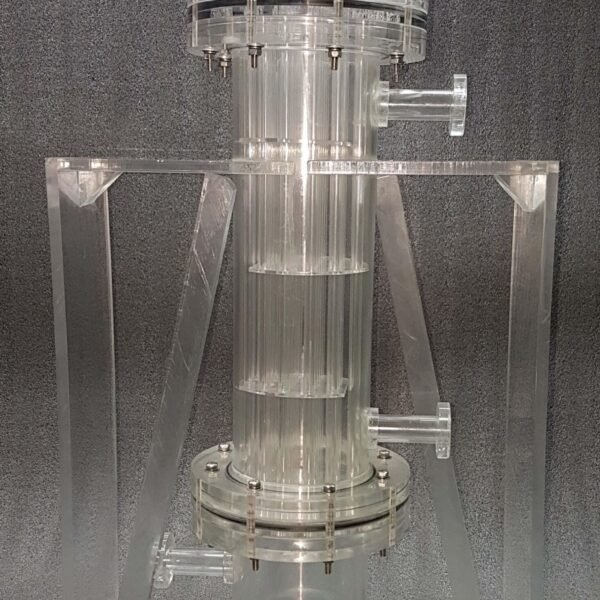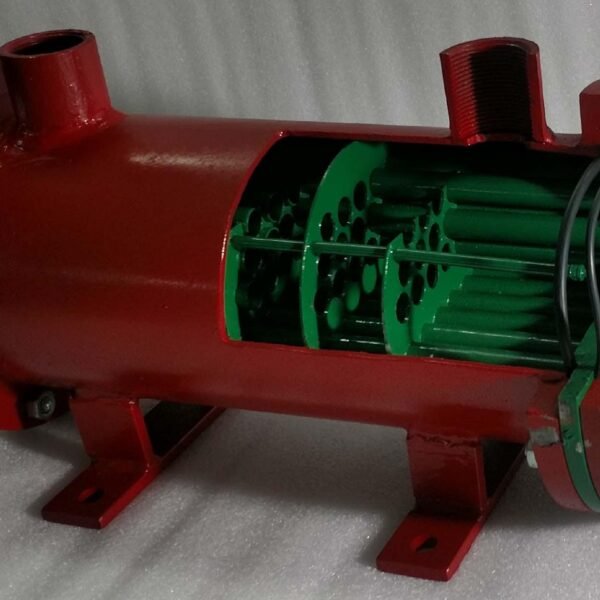Air Cooled ‘Fin Fan’ Heat Exchanger Model THC 006
– Made in actual materials allowing study of internal/external construction
– Working model in operational dimensions
– Uses real-time pump for water-pumping
– Durable and easily cleanable model
Water shortage and increasing costs, together with more recent concerns about water pollution and cooling tower plumes, have greatly reduced industry’s use of water cooled heat exchangers. Consequently, when further heat integration within the plant is not possible, it is now usual to reject heat directly to the atmosphere, and a large proportion of the process cooling in refineries and chemical plants takes place in Air Cooled Heat Exchangers (ACHEs).
There is also increasing use of Air Cooled Condensers for power stations. The basic principles are the same but these are specialized items and are normally configured as an A-frame or “roof type”. These condensers may be very large—the condensers for a 4000 MW power station in South Africa have over 2300 tube bundles, 288 fans each 9.1 m in diameter and a total plot area 500 m × 70 m.
ACHEs for process plants are normally just called Air coolers, but should not be confused with devices for cooling air (best described as Air Chillers).
The design of an ACHE is more complex than for a Shell and Tube Heat Exchanger, as there are many more components and variables










